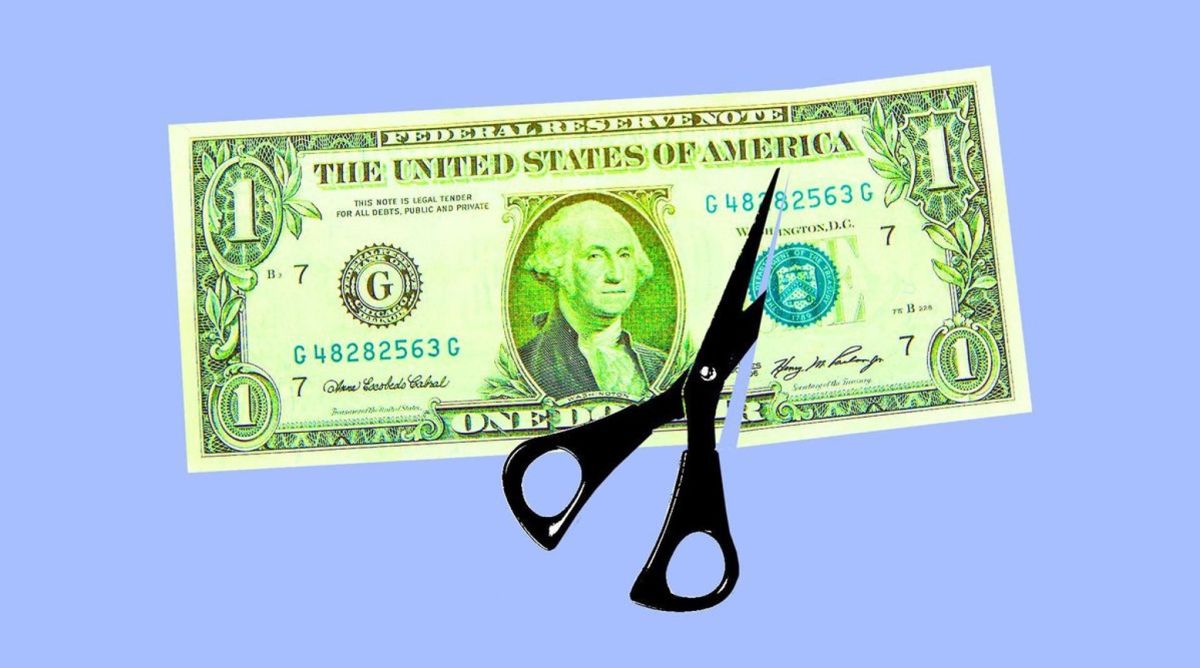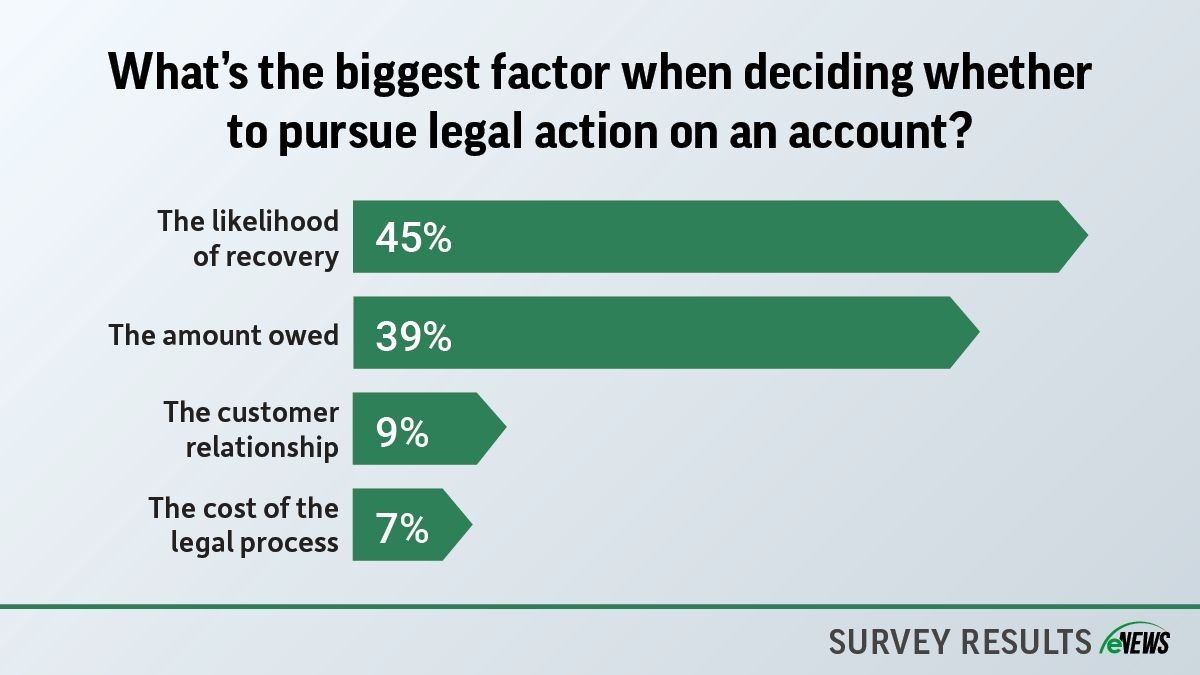Business Practices, eNews
Facing your first customer bankruptcy filing

For a B2B credit manager, the news that a customer has filed for bankruptcy can feel like a gut punch—especially the first time it happens. It’s a painful and unavoidable reminder of the unpredictability of business and the risks that come with extending credit.
Why it matters: Whether it’s your first or your hundredth bankruptcy notice, the weight of the situation is always there. But it is important to separate the emotional side from business and follow a checklist with immediate actions.
✅ Step #1 Verify information
The first action a credit manager should take in a bankruptcy filing is to find out if the information is true and accurate or simply a rumor. Verification is vital as there are strict legal consequences for attempting to collect a debt after a bankruptcy has been filed. Electronic access services, such as Public Access to Court Electronic Records (PACER), allow you to get case information directly from bankruptcy courts.
It is helpful for creditors to keep a bankruptcy checklist to ensure facts are correctly and accurately gathered and documents are organized for easy reference. The checklist includes:
- Amount outstanding
- Case number
- Where filed
- Date filed
- Submitted by
- Branch
- Account name and number
- Bankruptcy letter and envelope
- Date and amount of last payment
- Date and amount of last shipment
- Statement of account
- Account notes
- Copies of invoices
- Copies of proof of deliveries
- Name and email of company president
- Name and email of controller
- Fax number and mailing address for corporate office
The information and documents on the checklist above, along with the complete package of legal documents—including forms and schedules—that a debtor must file with the court, is needed to initiate most bankruptcy cases. All are required to be sent to the Commercial Financial Services (CFS) manager within two business days of notification of filing.
If all required documentation is not available at that time, it should be forwarded as soon as possible. For any missing items on the list, the information must be provided within five business days. Although these steps do not apply to all companies, it is important to have the bankruptcy information documented and to inform all stakeholders.
✅ Step #2 Join a creditors’ committee
In a bankruptcy, secured creditors are paid first, followed by unsecured creditors, such as credit card companies, suppliers and utility companies. By becoming a member of the creditors’ committee, an unsecured creditor can have a more active role than other creditors and have greater access to information and to the debtor’s representatives.
The creditors’ committee is composed of the largest unsecured creditors (typically seven, though sometimes fewer) who are willing to serve. It is appointed by a U.S. Trustee to represent the interests of all unsecured creditors, such as those in a Chapter 11 bankruptcy.
Serving on a creditors’ committee can be time-consuming, as it involves fulfilling official duties and responsibilities. “I’ve been on a couple of creditors’ committees, especially for bankruptcies that had large balances, because I wanted access to information about the case and wanted to have a part when making decisions,” said Ramona Johnson, CCE, manager, credit and accounts receivable at Talbert Building Supply, Inc. (Roxboro, NC). “I would certainly encourage newer credit managers to serve on a creditors’ committee to learn.”
✅ Step #3 Beware of preference exposure
Creditors should be aware of the risk of preference exposure when a customer declares bankruptcy. Preference exposure in bankruptcy refers to the risk that certain payments or transfers made by a debtor to creditors before filing for bankruptcy can be challenged and potentially reversed. In bankruptcy proceedings, a preference is defined as a transaction in which the debtor pays one creditor over others, potentially favoring them unfairly. In accordance with Section 547(b) of the Bankruptcy Code, a trustee (or debtor in possession) may pursue a preference action to recover property, including money, that a debtor has transferred to a creditor.
If the debtor is successful, the creditor would be forced to turn over the property despite the creditor’s interest in the property. “Prior to the bankruptcy, I was concerned about the customer’s past-due balance, so I had to make another payment arrangement with them,” said Edward Olewnik, CCE, senior credit operations and integration manager at CertainTeed LLC (Malvern, PA). “They placed a new order, made a payment and we shipped the order. Not long after that, they filed for bankruptcy. But we received little to no proceeds to pay towards the past-due balance because of the preference exposure, so we had to pay back the funds we received just prior to the bankruptcy filing.”
The Bankruptcy Code provides several defenses to a preference action, including what is commonly referred to as the ordinary course of business defense. Recognized in Section 547(c)(2) of the Bankruptcy Code, the ordinary course of business defense protects ordinary or routine transactions between a debtor and creditor, thereby encouraging creditors to engage with distressed companies.
✅ Step #4 File a proof of claim
A proof of claim (POC) is a written statement notifying the court that a creditor is owed pre-petition debt. It notifies the bankruptcy court, the debtor, the trustee and other interested parties that a creditor wishes to assert its right to receive a distribution (payout) from the bankruptcy estate.
In most Chapter 7 and Chapter 13 bankruptcy cases where there are assets to distribute, creditors must file a proof of claim in order to get paid. “We filed a POC, which took a few years, but we ended up getting back 100% of what we had written off as bad debt,” Johnson said.
Creditors must provide copies of all supporting documentation to support the basis and amount of the claim, including any applicable contracts, invoices, purchase orders (POs), account statements and security interest (if secured). Make sure to keep the original versions as well as copies of the documents yourself.
✅ Step #5 Seek legal counsel
It is beneficial to seek legal counsel before, throughout and after a legal proceeding. A bankruptcy attorney can work with you on what is required in a bankruptcy filing. “You can ask an attorney about the steps you need to take while learning what you can and cannot do in terms of communication,” said Daniel Wheeler, CCE, ICCE, director, Worldwide Credit at Adobe, Inc. (Lehi, UT).
Networking and relationship building
Making connections with credit professionals who have similar experiences or have faced similar challenges is helpful. Their experience and insights can help you in high-stakes situations such as bankruptcy. “My NACM contacts were able to support me with any questions I had and helped walk me through my first customer bankruptcy filing,” said Brittany Yvon, CBA, CICP, credit manager at OMG, Inc. (Agawam, MA). “Also, being so young in my career, having more seasoned credit professionals help me was also valuable.”
Maintaining a strong relationship with your customer can enhance the chances of their continued business post-filing, enabling you to negotiate favorable terms for your claim in bankruptcy proceedings and preserving a positive connection for future opportunities once they have restructured their finances. Having a strong rapport with them can make you a preferred vendor when they are looking to rebuild their business.
“It really comes down to relationships with your customers,” said Scott Michelsen, CCE, ICCE, director of credit and collections at Pave America (Warrenton, VA). “It’s also the relationship with the people you work with, such as sales, marketing and operations, as they can provide intel that can help you during bankruptcy filings.”
Invest in education
The more knowledgeable you are, the better prepared you’ll be when your customer files bankruptcy. Take advantage of NACM educational resources such as courses, webinars and the Professional Certification Program. “Take various classes on the topic and take excellent notes,” Yvon said. “If that isn’t an option, educate yourself and do your own research on how to go through a bankruptcy.”
NACM’s Thought Leader Forums are a great resource to learn more about bankruptcy. In them, you can ask questions to credit professionals of various industries about the bankruptcy process. “Engaging in conversations and asking questions will help expand your own knowledge about the process and what to do in bankruptcy cases,” Wheeler said.
The bottom line: Staying informed and proactive in bankruptcy situations can safeguard your interests and foster better outcomes for your business relationships.





